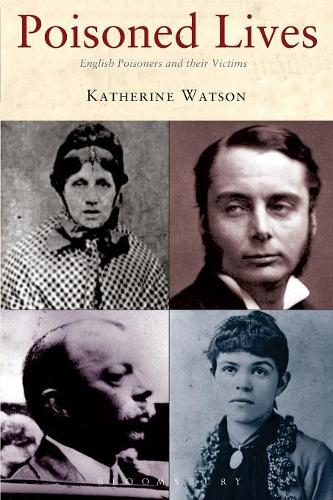
Poisoned Lives: English Poisoners and their Victims
(Paperback)
Publishing Details
Poisoned Lives: English Poisoners and their Victims
By (Author) Dr Katherine D. Watson
Bloomsbury Publishing PLC
Hambledon Continuum
23rd June 2006
United Kingdom
Classifications
General
Non Fiction
364.1523092242
Physical Properties
Paperback
272
Width 156mm, Height 234mm
300g
Description
From Mary Ann Cotton, the Victorian serial murderess, to Dr Crippen, poisoners have attracted a celebrity unmatched by violent killers. Secretly administered, often during a family meal, arsenic (the most commonly-used poison) led to a slow and agonising death, while strychnine (with its characteristic bitter taste) killed very quickly. Poisoned Lives is the first history of the crime to examine poisoning and its consequences as a whole. Unwanted husbands, wives or lovers, illegitimate babies, children killed for the insurance money, relatives, rivals and employers were amongst the many victims of these calculating killers. Difficult to detect before 1800, poison undoubtedly had its heyday in the nineteenth century. In response to many suspected cases, forensic tests were developed that made detection increasingly likely, and the sale of poisons became more tightly controlled. Because of this, twentieth-century poisoning has become a crime largely associated with medical professionals including, most recently, Dr Harold Shipman, the world's most prolific serial killer.
Reviews
"It will be one of the main points of reference for historians of poisoning (the list of primary sources is particularly useful), and will, one suspects, be a useful read for historians of forensic science. The meticulous depiction of poisoners from the eighteenth century to the present day is complemented by overarching discussions of the increasing capacity of the scientific detection of poison in the body; the methods, motivations, and opportunities for poisoning; and the impact these cases had on public conceptions of female crime and femininity itself." Barry Godfrey, Victorian Studies, Autumn 2007 -- Barry Godfrey
Mentioned in article on poison and the Victorian imagination by Ian Burney in History Today, 2008.
Author Bio
Katherine D. Watson is a researcher in the History Department, and Research Administrator in the School of Arts and Humanities, at Oxford Brookes University.
